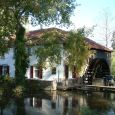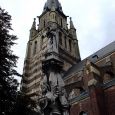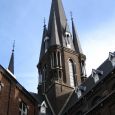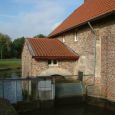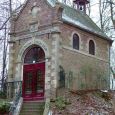Sittard
Advertisement
By train
The main train station is located at a 10 minutes walk from the city center. Sittard is served by intercity and regional train services. The intercity trains coming from the north (thus from the directions of Amsterdam, Utrecht, 's Hertogenbosch, Eindhoven, Weert, Roermond) are split in two here, with one part continuing to Heerlen and another to Maastricht. In the opposite direction, the two trains are combined here to continue north as one.Regional trains pass through from the directions of Echt, Roermond, Heerlen and Maastricht.
By bus
The bus terminal is next to the trainstation. The bus operator in Sittard and surrounding cities is Veolia, with lines to most of the smaller town in the region but also to larger destinations like Heerlen, Maastricht, Roermond, and Geleen.
Basilica of Our Lady of the Sacred Heart
The Basilica of Our Lady of the Sacred Heart is a Catholic church and pilgrimage church of the Roman Catholic Church on the Old Market in the historic center of Sittard . The church was founded for the 1867 set in Sittard Sacred Heart Devotion and hereby replaced the previously cramped chapel of the Ursuline convent . Construction was made possible by donations from the Netherlands. On 2 June 1875 the first stone was laid. This marble stone, which came from the Catacombs of St. Callixtus , was donated by Pope Pius IX . In 1877 construction was completed on 5 July 1879 was Msgr. Paredis John , the bishop of Roermond , consecrate the church. In 1883 the church by Pope Leo XIII , the first church in the Netherlands, basilica elevated
St. Peter's Chair Antiochiekerk
The Great or St. Peter's Chair Antiochiekerk is a church in Sittard .The church has a nave Gothic basilica with five-sided closed choir , and a substantial zijkoren west tower.Already in 1299 this church was a collegiate church . Over time the church has been renovated several times . The oldest parts of the church are built of brick , which is to ship and parts of the walls of the transept . Later it was used mainly marl , with the exception of the tower where the two materials in alternating layers of bacon were used. The church as a whole is an example of Gothic Meuse . After the fire of 1857 a major restoration took place under the direction of the architect PJH Cuypers , the tower of a new neo-Gothic upper foresaw. The ship he gave flying buttresses . In the second half of the 20th century there was a restoration with an extension of the church site.
Broeker mill city
The City Broeker Mill, Mill Rouf also called, is located in the same district former City Pants in the district of Sittard , municipality of Sittard-Geleen . The windmill is a turbine windmill and is located on the right bank of the Molenbeek running through the center of Sittard and runs a branch of the Yellow Brook.On 12 July 1582 Duke Willem van Gulik gave a permit to Dirk Jehw, steward of Born and Sibert Reding Courts, Secretary of the Audit Gulik, for the construction of the second mill in the Molenbeek in Sittard. A year later the mill into operation as bark and grinding mill. The mill was out of town was built near the Swynsweide because of the stench that accompanied grinding the oak bark, which was processed by the tanners Sittard. The grinding of grain was by molenbanrecht reserved for the first mill, the Sittardermolen. In 1699 served as the City Mill Broeker oil mill and later, after the lifting of the banrecht the French period , also as a corn mill. Count Guillaume De L'Eau by the French Prefecture in 1801 acquired the license to the grinding mill at its own cost to build.
Ophovenermolen
Ophovenermolen the same name is located in the former village Ophoven , which now constitutes a quarter of the district Sittard , municipality of Sittard-Geleen . The mill has a middenslagrad with a diameter of 5.92 m and is situated on the left bank of the Yellow Brook at the edge of the park. The current 2-layer U-shaped mill building dates from 1716 .The history of the mill dates back to 1348 when the mill belonged to the fief of the lords of Valkenburg, who also were the lords of Sittard and later by the dukes of Jülich . These men practiced the molenbanrecht out in Sittard. The first entry is an act of 10 June 1406 . At that time the mill was a flour mill that was part of the opposite Ophovenerhof located. The mill was later used as oil mill . In the sixteenth century, and mill Ophovenerhof management of the family Dobbelstein. From 1627 the mill was leased again.
Kollen Mountain
The Kollen Mountain is a hill in the Limburg town of Sittard.The Kollen Mountain is the most famous hill of Sittard. The most famous building is the ancient Chapel of St. Rose. This chapel was at the time of the goat riders a gathering place where the bandits came together.The Kollen Mountain is also famous for its carnival ritual taking place there Maske bury , and because of the annual gathering crooked bread .The natural beauty of the Kollen Mountain has long been under pressure from the advancing development. Founded in 1995, the Foundation for the Conservation Kollen Mountain is committed to preserving the natural beauty. Some successes of the Foundation are the cultivation of grain and spelled Memoriebos.
May - September


